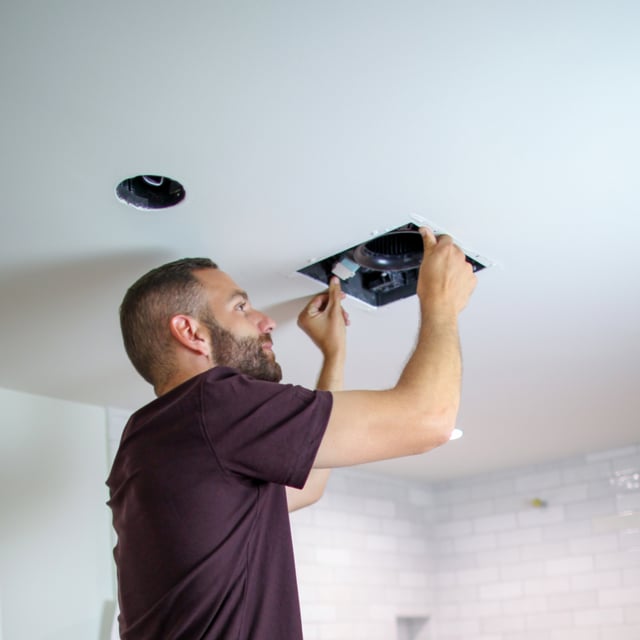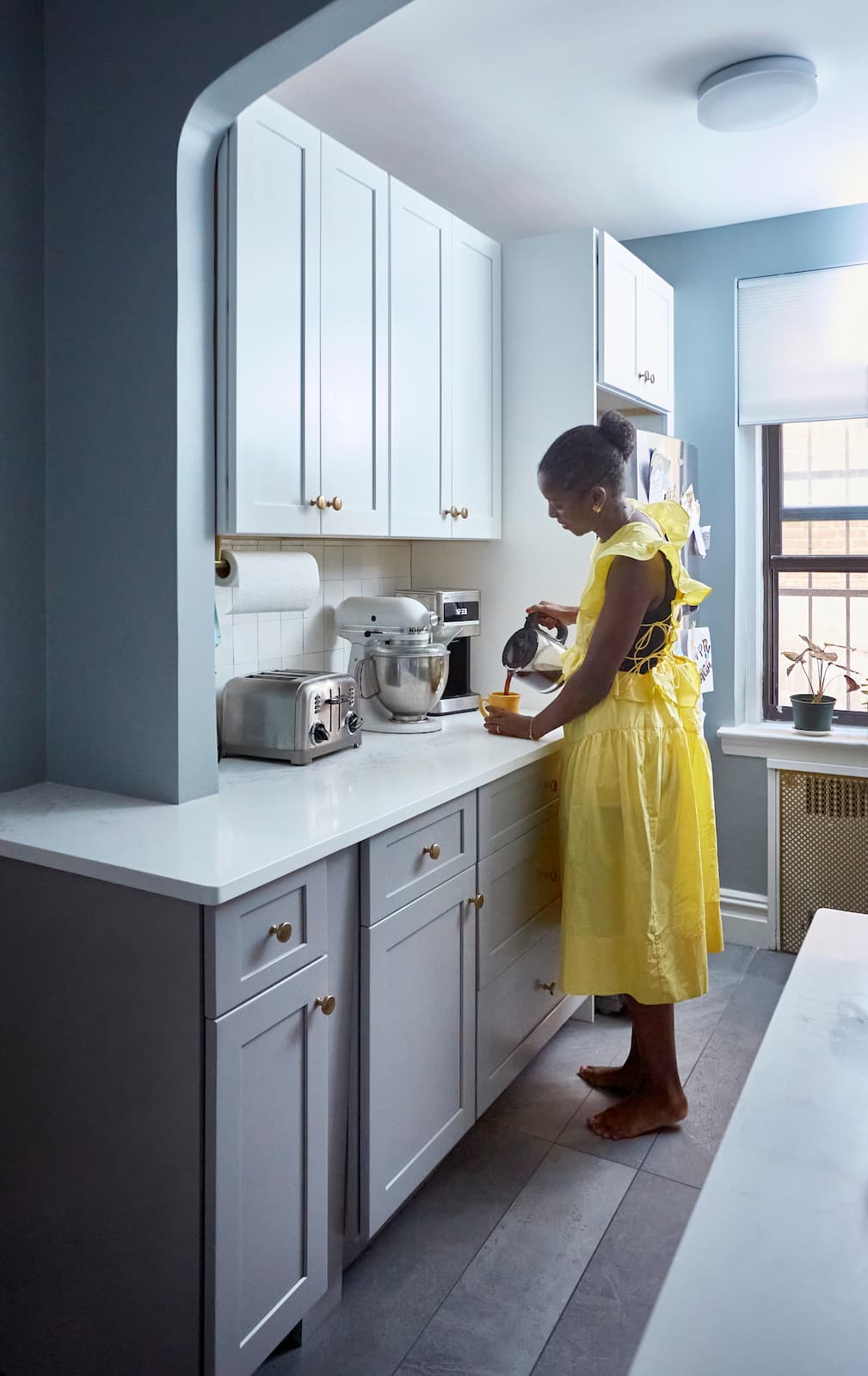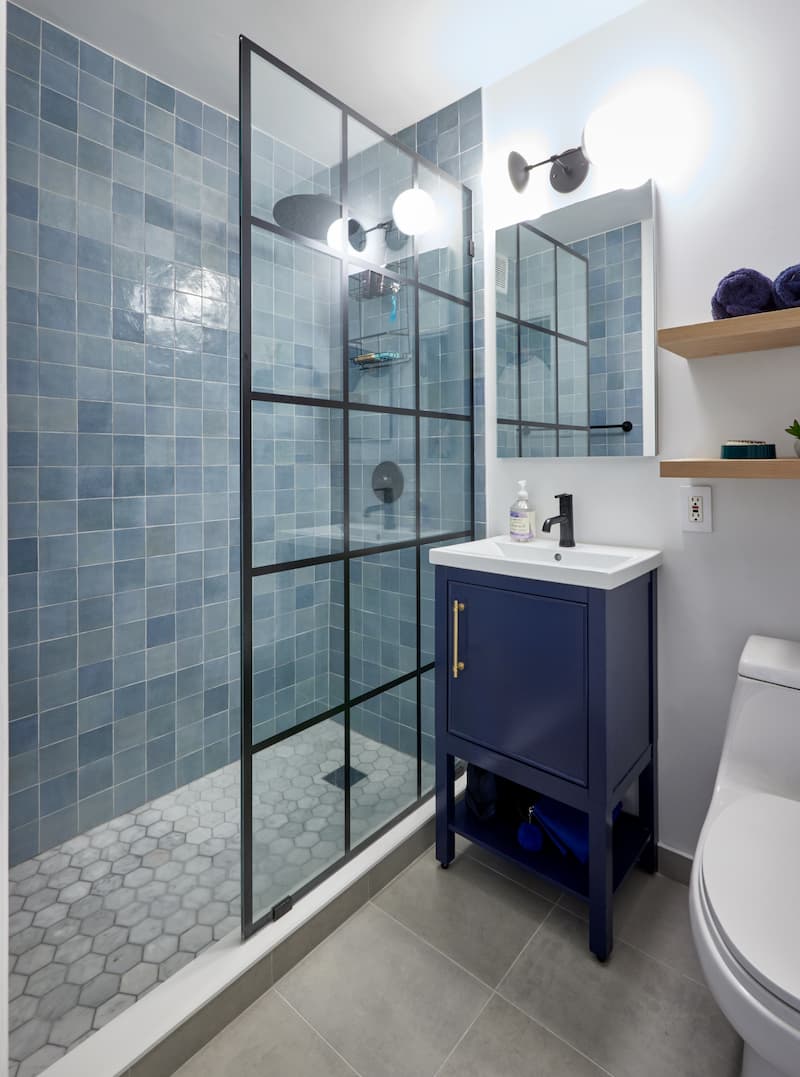Can Lights vs. Recessed Lights: Choosing the Right Fixture

In This Article
When it comes to modern home lighting, recessed and can lights are often mentioned in the same breath, but they’re not quite the same. Both offer a streamlined, built-in look that works well in contemporary spaces, but the differences between them matter. Understanding those distinctions can help you choose the right fixture for your layout, ceiling type, and lighting goals. Whether you’re aiming for task lighting in a kitchen or subtle ambiance in a living room, knowing what each type offers (and where each falls short) makes for smarter planning and better results.
What Are Can Lights and Recessed Lights?
Can lights—sometimes called pot lights—are a specific type of recessed lighting. They’re named for the cylindrical “can” that houses the bulb and socket above the ceiling. The bulb and socket are contained within this can, and only the trim is visible from below. This design allows for a focused, directional beam of light, making can lights handy for task and accent lighting.
Recessed lights encompass a broader category, including can lights and newer, canless designs. Recessed lights are installed flush with the ceiling or wall, creating a seamless, unobtrusive appearance. They’re available in many trims and styles—minimalist, decorative, and everything in between.
Key Similarities
- Minimalist Aesthetic: Both can and recessed lights are installed within the ceiling or wall, keeping the fixture out of sight and letting the light take center stage.
- Versatility: Both can be used for ambient, task, or accent lighting, depending on placement and trim.
- Energy Efficiency: Modern versions of both can accommodate LED bulbs, which offer significant energy savings and long lifespans.
Key Differences
Design and Construction
Can lights always feature a cylindrical housing (“can”) that holds the bulb and electrical components. This housing can be installed in ceilings, walls, or floors, and is especially useful for spaces where you want to direct light at a specific angle.
Recessed lights may use a can-style housing or a slim, canless design. Canless recessed lights are particularly popular in new builds and remodels because of their low profile and ease of installation in tight spaces.
Trim and Style Options
Can lights typically have more limited trim options, but are available in IC-rated (safe for contact with insulation) and non-IC-rated versions.
Recessed lighting offers a wide range of trims, including baffle, reflector, gimbal, wall-wash, pinhole, and shower trims. This variety allows for more customization in both appearance and light distribution.
Installation
Installing can lights is more involved, especially in existing ceilings, as it requires cutting a hole large enough for the can housing and ensuring proper wiring and insulation. Can lights can also be installed in walls or floors for directional or accent lighting.
Recessed lighting with canless designs is easier to install, typically requiring a small opening and minimal ceiling clearance. However, replacing the light source in canless fixtures may require swapping out the entire unit.
Turn your renovation vision into reality
Get matched with trusted contractors and start your renovation today!
Find a Contractor
Comparing Light Emission and Usage
Can Lights
- Directional Lighting: The cylindrical housing of can lights creates a focused, downward beam, making them ideal for task lighting (like over kitchen counters or workspaces) and accent lighting (such as highlighting artwork or architectural features).
- Adjustability: Many can lights can be angled or adjusted, allowing you to direct light exactly where needed.
- Ambient Lighting: While can lights can be used for general illumination, you may need more fixtures to avoid uneven lighting or “spotlight” effects.
Recessed Lights
- Ambient Lighting: Recessed lights excel at providing even illumination across a room, especially when spaced evenly and paired with wide-beam trims.
- Versatility: With the proper trim, recessed lights can also serve as task or accent lighting, but they are generally less adjustable than can lights.
- Mood and Decorative Lighting: Recessed fixtures can diffuse light for living rooms, bedrooms, or hallways, contributing to a comfortable and inviting atmosphere.
Comparing the Pros and Cons of Each
Can Lights Advantages
- Highly Versatile Placement: Can lights are surprisingly versatile. They can be installed in ceilings, walls—even floors—making them a flexible choice for spaces where traditional fixtures don’t quite fit. Think sloped ceilings, tight corners, or under-cabinet spots where a standard light would be bulky or distracting. That adaptability is a big part of why they show up in everything from modern homes to commercial spaces.
- Directional Control: One of the big perks of can lights is the ability to aim them. Many come with adjustable housings, so you can direct the light exactly where it’s needed—whether that’s over a kitchen counter, onto a favorite piece of art, or across a reading nook. Being able to fine-tune the angle doesn’t just help with function; it also cuts down on glare and makes it easier to create dramatic, intentional lighting effects.
- Task Lighting Excellence: Can lights are built for focus. Their downward beam makes them a smart pick for task-heavy areas like kitchens, offices, and workshops—anywhere you need clear, targeted light. Whether you’re chopping vegetables, reading fine print, or handling a DIY project, the bright, direct illumination helps you see exactly what you’re doing. It’s a practical choice for spaces where precision matters.
- Compatibility: Can lights come in IC-rated (insulation contact) and non-IC-rated versions, making them adaptable for different ceiling conditions. IC-rated cans can be safely installed in direct contact with insulation, which is essential for energy efficiency and fire safety. This compatibility ensures you can use can lights in almost any part of your home, regardless of ceiling structure.
Can Lights Disadvantages
- Complex Installation: Installing can lights in existing ceilings can be a challenging process that often requires professional expertise. The job may involve cutting precise holes, running new wiring, and ensuring the housing is properly insulated and supported. This complexity can increase both the time and cost of your lighting project.
- Potential for Uneven Lighting: If can lights are not carefully planned and spaced, they can create uneven lighting, resulting in bright “hot spots” and shadowy areas. Relying solely on can lights for general illumination may leave parts of the room dim, especially in larger spaces. To avoid this, use a well-designed lighting layout and consider supplementing with other fixtures.
- Maintenance: Replacing bulbs or components in can lights can be inconvenient, as it may require accessing the housing above the ceiling. This is especially true for older models or installations in hard-to-reach areas. Over time, this can make routine maintenance more cumbersome compared to surface-mounted fixtures.
- Aesthetic Impact: Though subtle, can light trims may be more noticeable than ultra-flush recessed options, which some homeowners prefer for a fully seamless ceiling. This can detract from the seamless look that many homeowners desire in modern interiors. In vintage or decorative spaces, can lights may also feel out of place compared to more traditional fixtures.
Recessed Lights Advantages
- Sleek, Minimalist Look: Recessed lights are installed flush with the ceiling, making them almost invisible when not in use. This creates a clean, uncluttered ceiling line that’s ideal for modern, open-concept, or low-ceiling spaces. Their subtle presence allows other design elements in the room to stand out.
- Wide Range of Styles: With a vast selection of trims, finishes, and sizes, recessed lights can be customized to fit any decor or lighting need. Options like baffle, reflector, gimbal, and wall-wash trims allow you to tailor the light output and appearance to your preferences. This versatility makes recessed lights suitable for everything from contemporary to traditional interiors.
- Even Illumination: When properly spaced and installed, recessed lights provide soft, uniform lighting that enhances comfort and ambiance throughout the room. They are excellent for general illumination, reducing harsh shadows and creating a welcoming environment. This makes them a popular choice for living rooms, bedrooms, and hallways.
- Energy Efficiency: Most modern recessed lights are designed to work with LED bulbs, which consume less energy and last much longer than traditional incandescent bulbs. This means lower energy costs and less maintenance over time. Long term, the energy savings can be significant, especially in homes with many fixtures.
For other eco-friendly home updates, read our guide Energy Efficient Home Improvements That Save You Money.
Recessed Lights Disadvantages
- Limited Adjustability: Most recessed lights are fixed in place, offering less flexibility for directional lighting compared to can lights. While some trims, like gimbal or eyeball, allow for limited adjustment, the majority are designed for broad, ambient illumination. This can be a drawback if you need to highlight specific features or require focused task lighting.
- Replacement Challenges: With canless recessed lights, replacing a failed light source often means swapping the entire unit, not just the bulb. This can be more costly and time-consuming, especially if the fixtures are installed in hard-to-access areas. It’s important to consider this when choosing between can and canless designs.
- Installation Constraints: While recessed lights are easier to install in new construction, retrofitting them into existing ceilings can still be complex. Obstacles like ceiling joists, ductwork, or limited clearance can complicate the process and may require professional installation. This can add to the overall cost and timeline of your project.
Where Should You Use Each?
- Kitchens and Workspaces: Can lights are right at home with work zones and kitchen ceilings. Their focused, adjustable beams make it easy to light up countertops, islands, or desks—wherever the task at hand demands clarity. Whether you’re prepping dinner, reading a recipe, or sorting through paperwork, can lights give you the kind of targeted brightness that keeps things sharp and functional.
- Living Rooms and Bedrooms: Recessed lights with wide-beam trims are perfect for living rooms and bedrooms, providing soft, even illumination that’s conducive to relaxation and entertaining. Their minimalist look keeps the ceiling uncluttered and allows your furniture and decor to take center stage. Dimmable recessed lighting in bedrooms can enhance comfort and support a relaxing nighttime routine.
- Hallways and Entryways: Recessed lights are a great choice for hallways and entryways, where a welcoming, well-lit path is important. Their flush installation prevents fixtures from protruding into narrow spaces, making movement easier and safer. Evenly spaced recessed lights can brighten long corridors and highlight architectural details.
- Bathrooms: Both can and recessed lights can be used in bathrooms, but it’s essential to choose moisture-rated trims for safety and durability. Can lights are excellent for providing focused lighting over vanities or in showers, where bright, direct light is needed for grooming. Recessed lights, on the other hand, are ideal for general illumination, ensuring the entire space is evenly lit.
- Accent and Feature Lighting: If you want to spotlight a favorite painting, built-in shelving, or a standout architectural detail, can lights are a great tool. Their directional design lets you aim the beam exactly where you want it, helping features pop and adding depth to a room. Recessed lights with adjustable trims can also work well for accent lighting—but can lights tend to offer a bit more precision, which can make all the difference when you’re going for that refined, gallery-like effect.
Design a Home That’s Uniquely Yours
Block can help you achieve your renovation goals and bring your dream remodel to life with price assurance and expert support.
Get Started
Can Lights vs. Recessed Lighting: Making the Right Choice
The right lighting comes down to what the space needs. If you’re looking for flexibility and focus—like over a kitchen island or highlighting a bookshelf—can lights are a strong choice. For a cleaner, more uniform glow across a room, recessed lights might be the better fit.
In many homes, it’s not an either/or decision. Using can lights for targeted spots and recessed lighting for general ambiance can create a layered, balanced effect. Just remember: placement matters. A thoughtful lighting plan—and guidance from a licensed contractor—can help you get it right the first time.

Written by Block Renovation

Renovate confidently with Block
Easily compare quotes from top quality contractors, and get peace of mind with warranty & price protections.
Thousands of homeowners have renovated with Block

4.5 Stars (100+)

4.7 Stars (100+)

4.5 Stars (75+)
Renovate confidently
- Top quality contractors
- Warranty & price protections
- Expert resources

